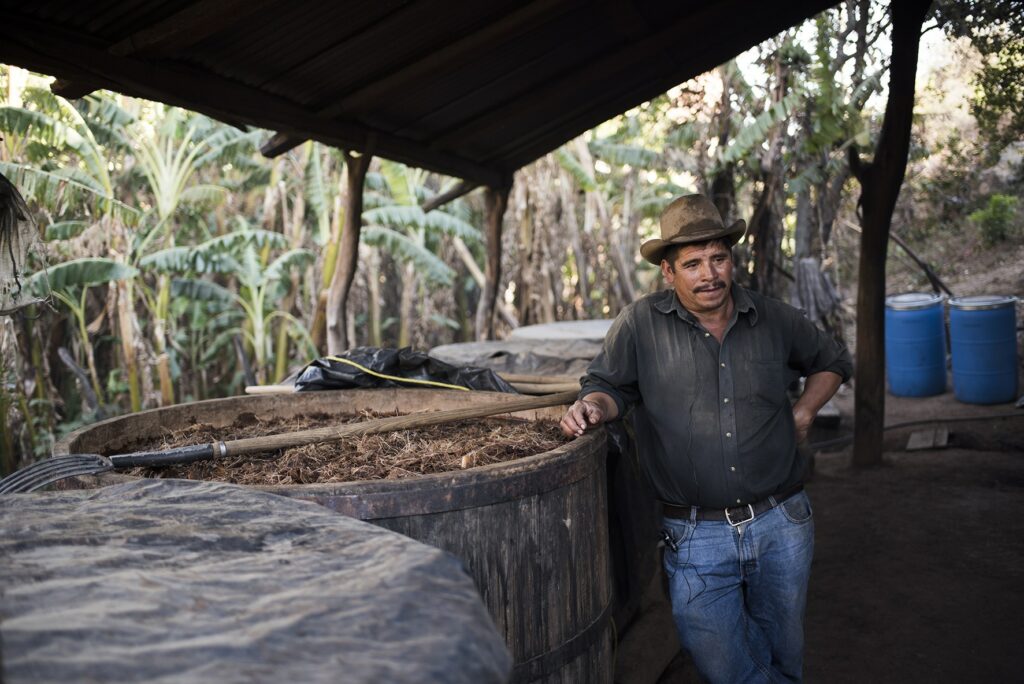
Face as brown and tough as leather, with deep, deep smile lines crinkling around sparkling black eyes, Don Alberto Martinez welcomed us warmly to his organic mezcal farm just outside Oaxaca City. His firm, rough handshake spoke volumes of a labor-intensive but honest life of living and working his land on the outskirts of Oaxaca City.
The Mexican state of Oaxaca is a treasure-trove of off-the-beaten path experiences, many of which you will not find on your own – exploring the dizzying heights of surreal petrified waterfalls; soaking in a cliff side mineral pool; enduring the flaming temazcal oven while the shaman pours honey, chocolate and who-knows-what-else on you, thrashing you with a bouquet of “healing” basil; having crickets (deliberately) in your salad; sitting at a midnight campfire perched on the edge of a mountain; swimming at a swimsuit-optional beach – well, those are just a few of the unique cultural adventures I experienced in Oaxaca.
Don Alberto Martinez’ organic mezcal farm was another.
I had many cultural experiences in #Mexico, with my top being Don Alberto Martinez’ #organic #mezcal farm. Click To Tweet
Mezcal vs Tequila
Mezcal is the “in drink” in Mexico; the “new tequila,” whose increasing popularity has seen exports grow 80% between 2011 and 2015, and more than 1.1 million liters per year. Unlike tequila, which is made solely from the blue agave, mezcal can be made from over thirty different species of agave. This plant, contrary to popular belief, is not a cactus but is actually part of the asparagales botanical order akin to the yucca plant.
And unlike tequila which is now mass produced, mezcals are hand-crafted using artisan techniques that have not changed for hundreds of years. Ninety-percent of mezcals are produced on small artisanal farms in Oaxaca, with each farm – indeed each batch – creating its own unique flavor. In Oaxaca, they say “Para todo mal, mezcal, y para todo bien, también,” Which means “For every ill, Mezcal, and for every good as well.”
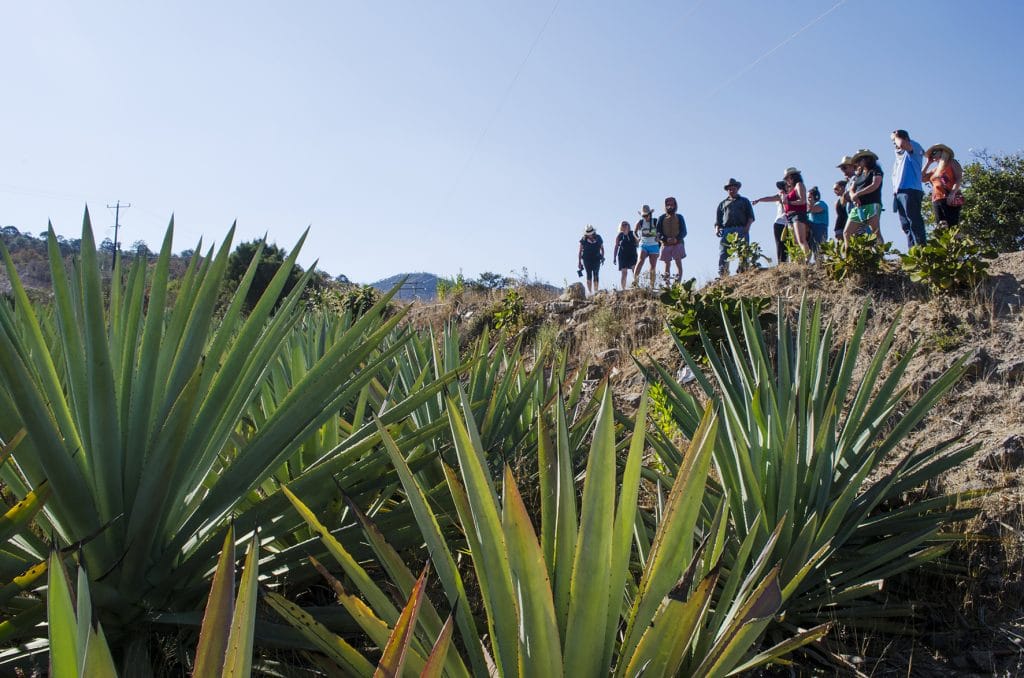
An Organic Mezcal-Making Process
Don Alberto was eager to take us through the mezcal process, starting with the agave plant itself. He proudly claimed that his plants are only harvested after a minimum 8-to-10-year growth cycle. After the plants flower, the bottom part, called the piña because it looks like a pineapple, becomes swollen. Unlike some mezcal producers who harvest too early in order to bring the product to market, Don Alberto prefers to wait longer, thereby enhancing the quality and flavor of the liquid.
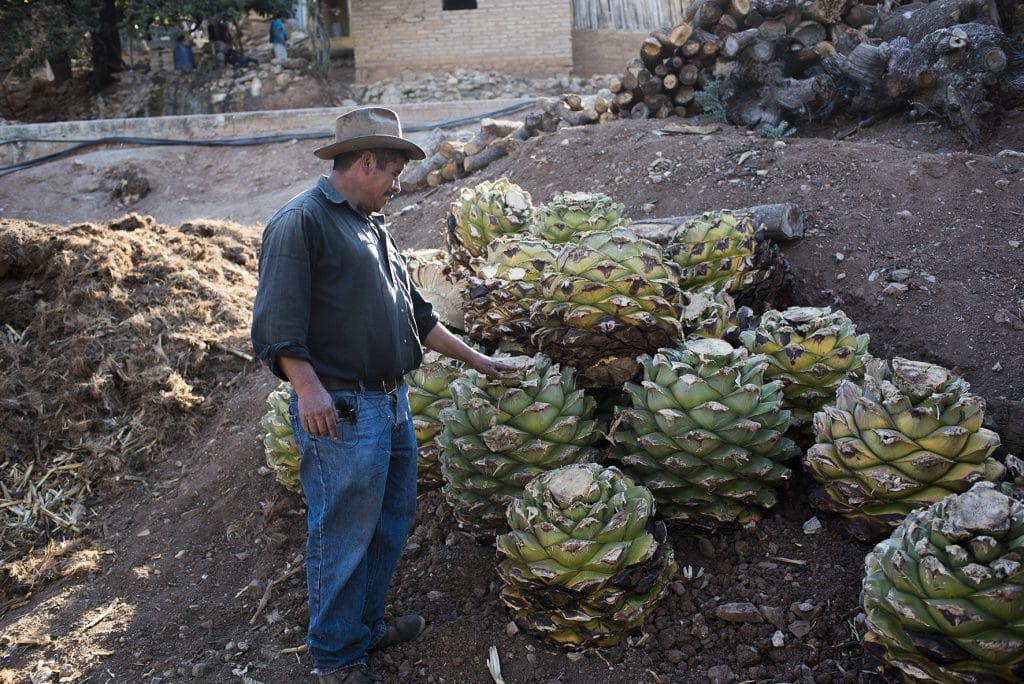
At harvest, the plant is stripped of its long spear-like leaves, leaving just the pina.
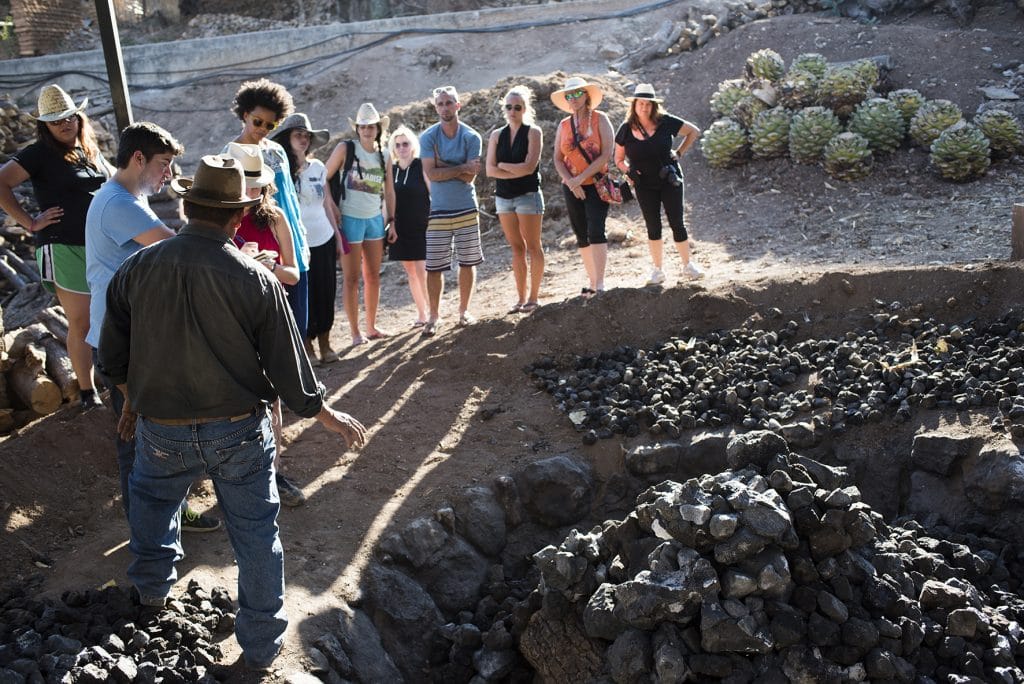
The cooking process is next, and this is where tequila and mezcal process part ways. With tequila, the pinas are cooked in large industrial ovens, mass production. With artisanal mezcal production, the pinas are cooked using the traditional handcraft tradition, in a deep underground, earthen cone-shaped pit filled with rocks.
A fire is lit at the bottom of the pit and the pinas are then placed on top and covered with banana leaves or burlap and then a layer of dirt. For up to eight days, the “oven” smokes and cooks the pina. It is this underground baking process that gives mezcal its smoky flavor.
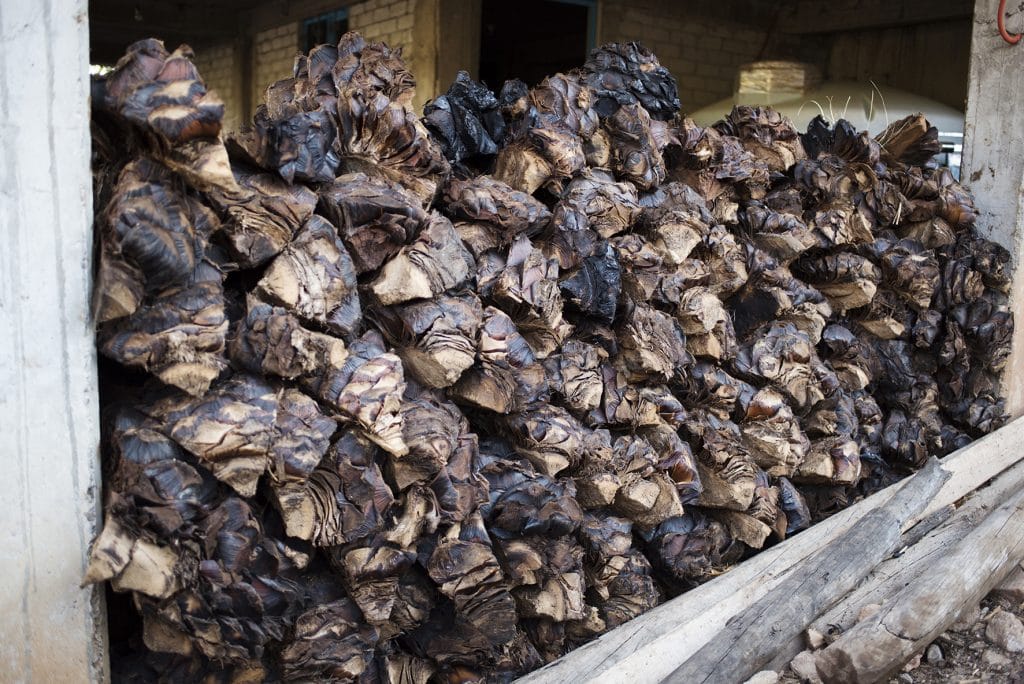
The pinas are removed from the underground oven, and the artisanal mezcal progression continues with the crushing process. The product is placed into a tahona – a round base with a donkey pulling a large stone wheel around and around in a circle. The heavy stone mill crushes the cooked agave, extracting the plant’s juice. This is the way it has been done for hundreds of years, dating back to as long ago as the 1600’s.
What's the difference between #mezcal and #tequila? We've got the answer here. Click To Tweet
The pina mulch is then put into large wooden vats, where water is added and fermented in open air which can be between 15 days and four weeks – it depends on the all-important temperature. Warmer temperatures result in faster fermentation.

Next, the liquid is distilled in clay or copper stills, usually twice. They are heated up then the liquid runs through pipes into a cistern filled with cool water. To achieve a smokier taste, the mezcal is aged for one year in a wooden barrel.
Immersive Mezcal Travel
Alberto has been making organic mezcal for over nine years, selling it mainly by word of mouth. But that’s all changing.
Enter Bernardo Buendia and Samantha Calzada, the masterminds behind Cantimplora Travel. Cantimplora offers personalized tours throughout Oaxaca, taking tourists to unique, exotic, and educational places they would not otherwise find. They found Don Alberto, and now they are helping him to distribute his mezcal. Cantimplora’s mission is to give back to the community, and they are serious about it, giving 10% of their profits to brand and distribute Don Alberto’s mezcal, which has just been granted the Mexican government’s coveted seal of certification.
Did you know you can #tour an organic #mezcal farm in #Mexico with a local guide? So cool! Click To Tweet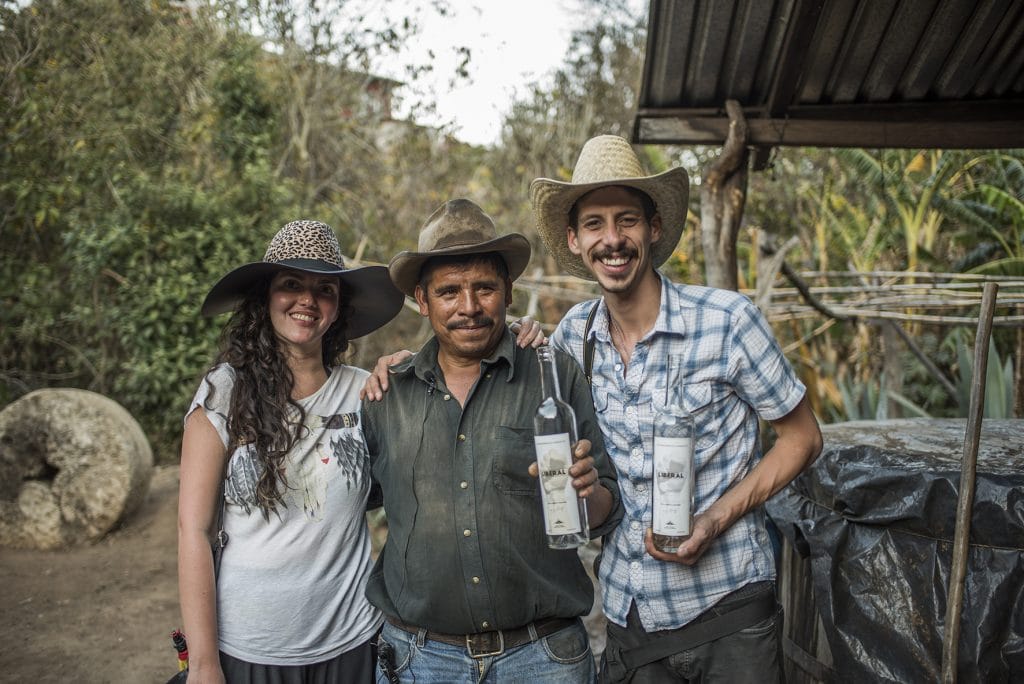
At the end of our visit, Bernie and Samantha brought out a crate filled with the brand new bottles for mezcal. We witnessed Don Alberto seeing them for the first time, and it was an emotional experience for all. The “LIBERAL” label depicts a pumping fist and the description “Artisanal Mezcal by Alberto Alvarez” printed below it with a stylized signature. It was my good fortune to witness this crossroad of impact and sustainable tourism.
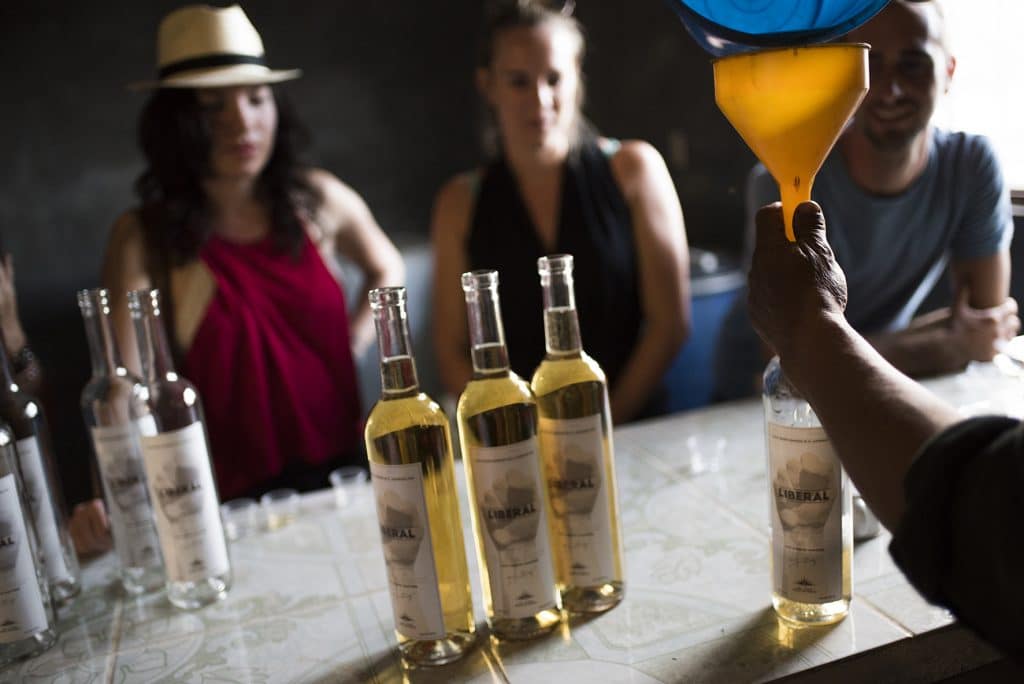
Don Alberto took the bottles into his workshop, siphoned the mezcal using a tube and his mouth to get it flowing, and then poured it through a funnel into the bottles, all under the watch of a local boy peddling crude but charming hand-made flowers. The bottles were capped, sealed with wax, and handed out.
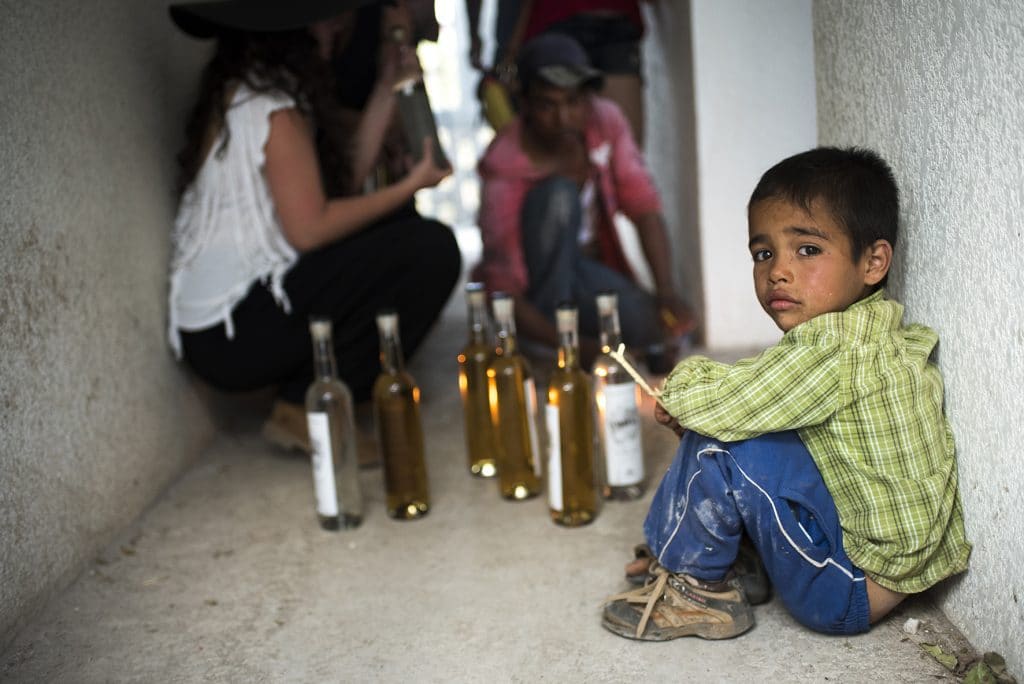
Breaking Mezcal Stereotypes
Despite the similar name, mezcal does not contain mescaline or other psychedelic substances. The artisanal product can be sold young, reposado or aged. It is generally sipped neat (straight) its strong smoky flavor savored, accompanied only by a slice of fresh orange coated in sal de gusano (salt mixed with chile and ground worms).
With the sun beginning to slip down towards the Sierra Madre in the background, Don Alberto passed around plastic sample cups filled with his kick-ass, 52-proof young mezcal just poured the vat. Strong. Smoky. Silky. Scrumptious.
From small sample cups we sip #organic mezcal on Don's farm in #Mexico. Delicious. Click To Tweet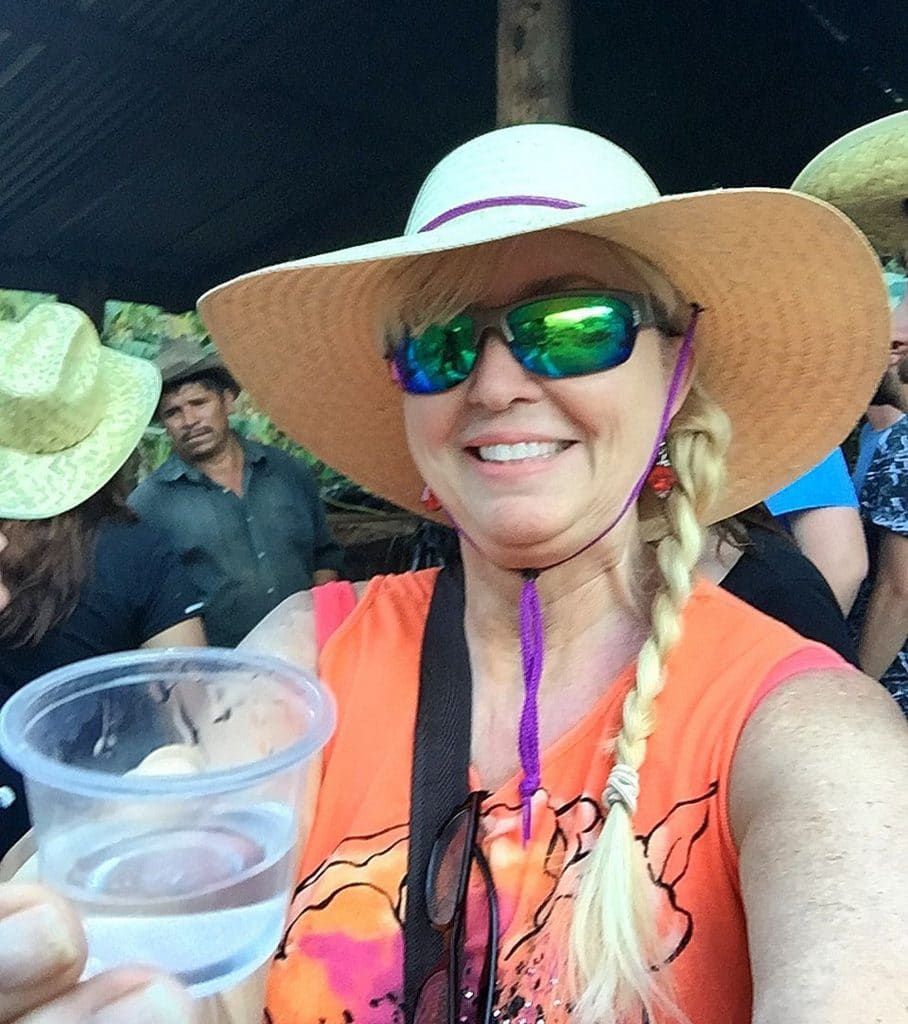
If you’re looking for an off-the-beaten-path experience filled with entrepreneurial passion, community interest and luscious libation, look no further than Don Alberto Martinez’ organic mezcal farm.
Have you visited Oaxaca or tried organic mezcal? Share your experiences in the comments below!
Recommended:
Chef Bo Bendana Brings Innovative Moroxican Cuisine To Baja California, Mexico [Blog Inspiration]
Holy Smoke! It’s Mezcal!: A Complete Guide from Agave to Zapotec by Mr. John P. McEvoy [Great Reads]
Stay Fit With Yoga On The Go Online [Travel Health]
Latest posts by Patti Morrow (see all)
- An Unforgettable Guide To Pisac, Peru’s Most Underrated City - Apr 10, 2018
- How To Explore Eastern Europe’s Surprising Sparkling Wine Culture - Dec 13, 2017
- An Inside Look At China’s Mesmerizing Food Markets - May 15, 2017
- This Is What Happens When You Visit Sweden For The Coffee - Mar 15, 2017
- Cooking Authentic Macedonian Food At Lake Ohrid - Feb 8, 2017

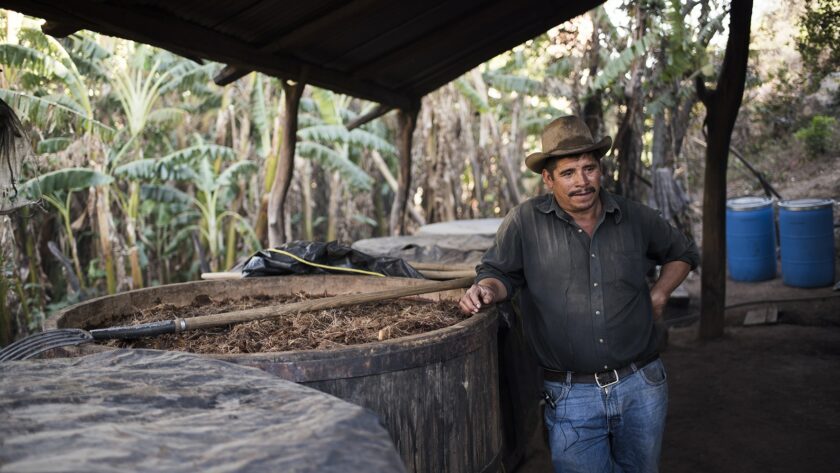


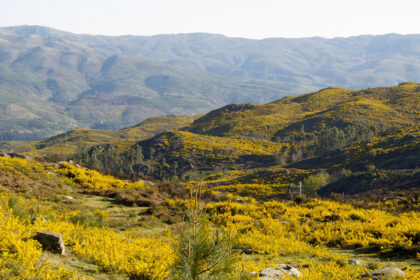
I love seeing how stuff is made, and handcrafted goods are all the more interesting to learn about while traveling. I now know the difference between mezcel and tequila – thank you!
Oaxaca is an area of Mexico that I intend to explore in the future and I had no idea that Oaxaca was the place for mezcal production. So much more exploring to do!
@Susan: There are actually many great small family-run mezcal farms to check out in Oaxaca. Not sure where you live, but if you’re ever in NYC there’s a restaurant called Mayahuel that can also give you a first-rate mezcal education. They only source 100% agave mezcals and tequilas made in a traditional fashion, and their staff love talking about the stuff 🙂
The making of mezcal would have been so fascinating to see. I am not familiar with mezcal and found this very interesting. Is the taste at all similar to tequila?
@Donna: You have to try it! Because the pinas are roasted you’ll typically find a smokier taste than tequila. Tastes delicious in spicy cocktails 🙂
I didn’t know the difference between Tequila and mezcal, but now that I do I will be sure to make my margaritas with Tequila and my shots with mezcal.
Thanks for the education I knew they were related, but had no idea what the difference was. Great to see an organic operation and yea for supporting an artisan production!
@Alison: Yay to that!
Hi there, I came across your blog entry. I’m having trouble finding this farm location so that I can visit while in Oaxaca. Did you use a guide or tour to find this place? If so would you mind sharing it. I’d love to visit.
Lisa
Great read! But… what I don’t see is information on Don’s farm! Where is it? How do I get there? Heading to Oaxaca next month….
Also: single-use plastic cups? No bueno.